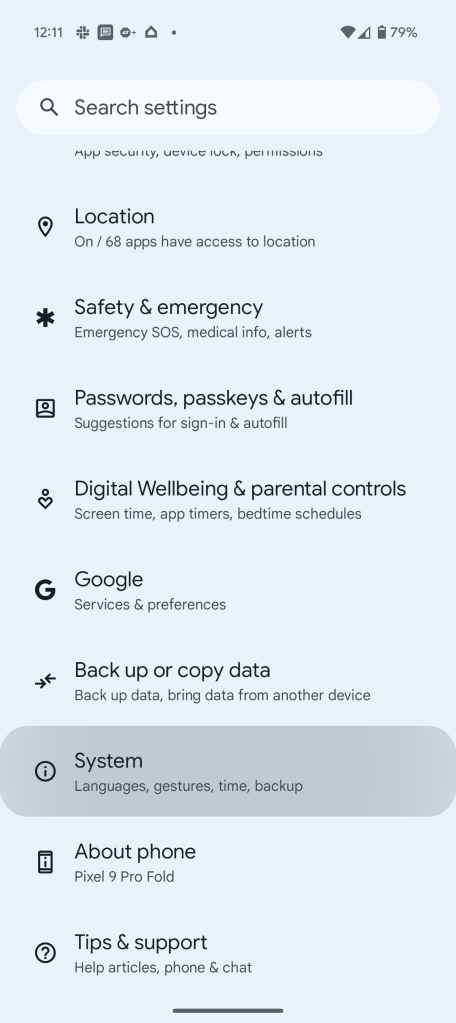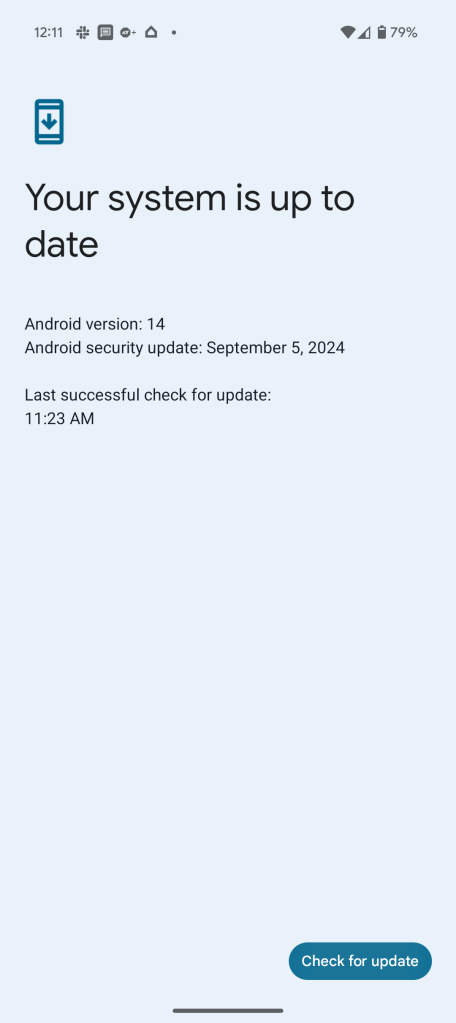While the timing feels a bit odd with new Pixel phones already on the market, Android 15 is now finally available to Google Pixel smartphones. Here’s how to install it.
What’s new in Android 15?
Android 15 isn’t a massive update to the system, but it delivers a handful of new features and upgrades.
A few notable additions include Private space, a way to lock down specific apps on your phone or tablet behind an extra layer of security. Predictive back shows you a preview of what you’ll see next when you use the back gesture. There’s a revamped Volume panel, improvements to widgets and wallpapers, the ability to Save app pairs on tablets and foldables, automatic turn-on for Bluetooth, and much more.
We’ve got an in-depth breakdown of every single new feature available now on YouTube.
Alongside Android 15, a new Feature Drop is also now available for Pixel devices with some additional new features.
What Google Pixel devices can run Android 15?
The latest Pixel devices will be supported for years to come, but a lot of older Pixels are no longer getting major updates. Android 15 is the first release that doesn’t support any Snapdragon-powered Pixel devices, with the update available exclusively on Tensor devices.
The full list of Pixel devices getting Android 15 includes:
- Pixel 6
- Pixel 6 Pro
- Pixel 6a
- Pixel 7
- Pixel 7 Pro
- Pixel 7a
- Pixel Fold
- Pixel Tablet
- Pixel 8
- Pixel 8 Pro
- Pixel 8a
- Pixel 9
- Pixel 9 Pro
- Pixel 9 Pro XL
- Pixel 9 Pro Fold
There may be unofficial ways to get Android 15 on some older devices, but these aren’t provided by Google. Notably, Android 15 is the last major OS upgrade for Pixel 6 series devices, but they’ll continue to get security updates for a while.
How to install Android 15 the normal way
The easy way to install Android 15 on Google Pixel devices is through an over-the-air update. To do this, you’ll go to Settings > System > Software updates, and press the “Check for updates” button.
If the rollout has reached your device, you’ll be prompted to download the update, let it install in the background, and later reboot your phone.




Google usually rolls out these new updates reasonably quickly, but OTA updates can sometimes take a couple of days to be available to all users.
How to sideload Android 15
If you want to skip the wait and install Android 15 immediately, you can manually install the update on Google Pixel devices with relative ease using the sideloading process below.
- Download the needed files.
- Boot into Recovery mode.
- Navigate to ADB sideload.
- Connect the handset to a computer with ADB tools installed.
- Enter the sideload command.
- Reboot your phone.
WARNING: Due to issues that arose during Android 15’s beta program, it’s best practice to unlock your bootloader – or at least turn on OEM Unlock in developer settings – before installing an OTA.
To enable OEM unlock, go to Settings > System > Developer Options > OEM Unlocking. You’ll need to enter your PIN or password to confirm this change.
1. Download Android 15 files
To get started, you’ll first need to download the files needed to actually put the Android 15 on your Pixel.
There are two ways to do so. First, you can install a Factory Image, which wipes your phone and starts everything from scratch. Alternatively, and the way we’ll detail here, there’s an OTA file, which installs over your current version of Android without wiping your phone.
You can download the OTA file from Google’s Full OTA Image hosting site. That site contains OTA downloads for sideloading different updates, including the Android 15, on every Pixel and Nexus device, so you’ll need to scroll down to ensure you are downloading the file that is associated with your device. OTA downloads are available here for Android 15.
For the Android 15, only Pixel 6/Pro, Pixel 6a, Pixel 7/Pro, Pixel 7a, Pixel 8/Pro, Pixel 8a, Pixel Fold, Pixel 9, Pixel 9 Pro, Pixel 9 Pro XL, Pixel 9 Pro Fold, and Pixel Tablet are available. You won’t be able to install it on the original Pixel/XL, Pixel 2/XL, Pixel 3/XL, Pixel 3a/XL, Pixel 4/XL, Pixel 4a, Pixel 4a 5G, Pixel 5, or Pixel 5a.
Note: This process (using OTA) won’t wipe your device, but it’s good practice to back up any irreplaceable data in case something goes wrong.
2. Boot into Recovery mode
Next, you’ll boot your Pixel into Recovery mode. To do this, fully power down your handset. Then hold down on the Power button and the Volume down button at the same time until you get to the Bootloader page. You will know you’re in the right place when you see an Android figure lying down on the screen.
Using your volume buttons, scroll down to Recovery mode. Select this by clicking the power button. Alternatively, if you’re already connected to a computer with ADB, you can use the reboot recovery command.
Now, you should see a smaller Android lying down with an exclamation mark over it. From here, press the Power button and the Volume up button for about a second to fully enter Recovery mode. Releasing the Volume up button will send you into Recovery.
3. Navigate to ADB sideload
Using the volume buttons, scroll down to Apply update from ADB and select it with the power button. This will launch a mostly blank screen with text near the bottom directing you on how to sideload an OTA.
4. Connect the handset to a computer with ADB tools installed
This step is important as it’s the only way to transfer the downloaded OTA file to your handset. You’ll need to have ADB and Fastboot tools in a handy place. You can download ADB tools from the Android Developers website. You can also use the Universal ADB Drivers from ClockWorkMod, which can make the process a bit easier on Windows devices.
5. Enter the sideload command
As long as everything is in place, you can now sideload the OTA file. On Windows, ensure your Command Prompt is directed to the ADB tools folder and type in adb sideload. If you’re on macOS or Linux, do the same thing in Terminal (use “cd” and “ls” commands to make sure your Terminal is pointed at the right folder – Google it if you need help) but type in ./adb sideload. You’ll then need to insert the file name of the .zip folder you downloaded from Google and hit enter to start the process.
If everything is working properly, you should see some dialog on your computer and handset that shows the process of the sideload and installation process.
6. Reboot your phone
Once the OTA is done installing, you will be taken back to Recovery Mode. The last step to jump into the new update is to select the Reboot now option with your power button.
Questions? Let us know in the comments.
FTC: We use income earning auto affiliate links. More.

